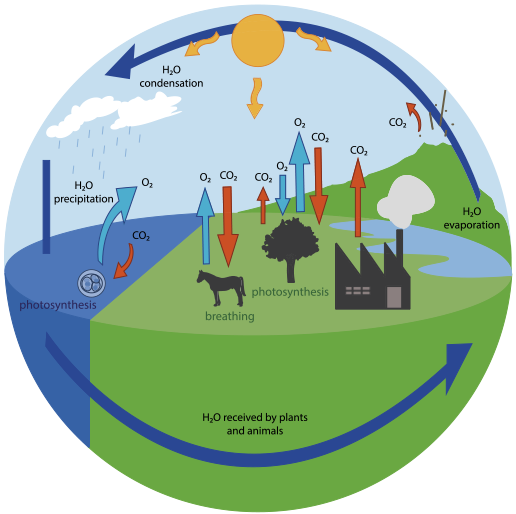Practice Key Questions on Major Domains of the Earth for Class 6 Exams 2025-26
FAQs on Class 6 CBSE Social Science Worksheets: Major Domains of the Earth (2025-26)
1. What are the four major domains of the Earth as per the CBSE Class 6 syllabus for 2025-26? Briefly describe each.
The four major domains of the Earth are essential concepts for exams. They are:
- Lithosphere: This is the solid, rocky outer part of the Earth, which includes the continents and the ocean floors. It provides the land we live on.
- Hydrosphere: This domain comprises all the water on Earth's surface, such as oceans, rivers, lakes, and groundwater. It is why Earth is called the 'blue planet'.
- Atmosphere: This is the thin layer of gases that surrounds the Earth, held in place by gravity. It protects us from the sun's harmful rays and contains the air we breathe.
- Biosphere: This is the narrow zone where the lithosphere, hydrosphere, and atmosphere interact to support life. All living organisms exist within this domain.
2. For a 3-mark question, explain why the Earth is often called the 'blue planet' and name the five major oceans.
The Earth is called the blue planet because more than 71% of its surface is covered with water. This vast expanse of water, primarily the oceans, gives our planet a distinct blue appearance when viewed from space. The five major oceans, ranked by size, are:
- The Pacific Ocean
- The Atlantic Ocean
- The Indian Ocean
- The Southern Ocean
- The Arctic Ocean
3. How do the major domains of the Earth interact to make the Biosphere possible? This is a frequently asked conceptual question.
The Biosphere exists only because of the precise interaction between the other three domains. This is a critical concept for understanding ecology. For life to thrive:
- The Lithosphere provides the land, nutrients, and a surface for organisms to live on.
- The Hydrosphere provides the water essential for all life processes.
- The Atmosphere provides necessary gases like oxygen for respiration and carbon dioxide for photosynthesis, while also regulating temperature.
The Biosphere is the unique, narrow zone where land, water, and air meet, creating the perfect conditions to support all forms of life.
4. Explain with two examples how human activities can disturb the natural balance of the Earth's domains.
Human activities can significantly disrupt the delicate balance between Earth's domains, a common topic in HOTS (Higher Order Thinking Skills) questions. Two key examples are:
- Deforestation: Cutting down forests on a large scale (affecting the Lithosphere) releases large amounts of carbon into the Atmosphere, contributing to global warming. It also leads to soil erosion, impacting both land and water systems.
- Industrial Pollution: Burning fossil fuels releases harmful gases into the Atmosphere, causing acid rain which damages the Lithosphere (soil, buildings) and pollutes the Hydrosphere (lakes, rivers), harming all life in the Biosphere.
5. What are the two main divisions of the Earth's surface? Explain the key difference between them.
The two main divisions of the Earth's surface, part of the Lithosphere, are the continents and the ocean basins.
- Continents: These are the vast, continuous landmasses that rise above sea level. Asia, Africa, and North America are examples of continents.
- Ocean Basins: These are the huge depressions on the Earth's surface that are filled with water, forming the major oceans.
The key difference is elevation: continents are the high-standing portions of the Earth's crust, while ocean basins are the low-lying portions.
6. From an exam perspective, what is the importance of the different gases in the Atmosphere?
The composition of the atmosphere is an important topic. While Nitrogen makes up 78% of the air, other gases are vital for life:
- Oxygen (21%): It is essential for the respiration of almost all living beings, including humans and animals. It is the 'breath of life'.
- Carbon Dioxide (approx. 0.03%): Although present in a tiny amount, it is crucial because plants use it to make their food through photosynthesis. It also absorbs heat radiated by the Earth, keeping the planet warm.
7. Why is the Biosphere considered a major domain of the Earth, even though it's described as a 'narrow zone'?
Although the Biosphere is geographically a narrow zone, its importance is immense, which is why it's classified as a major domain. Its significance comes from the fact that it is the only domain that supports life. It's the region where the unique and complex interactions between land (Lithosphere), water (Hydrosphere), and air (Atmosphere) create the necessary conditions for every living organism, from the smallest microbe to the largest animal, to exist and thrive.

























